Kenya
Kenya, in long form the Republic of Kenya is a country in East Africa. It borders South Sudan to the northwest, Ethiopia to the north, Somalia to the east, Uganda to the west, and Tanzania to the southwest. It is washed by the Indian Ocean to the southeast.
Kenya’s history
Precolonial
The Great Rift Valley is often referred to as the “cradle of humanity” because of the many hominid fossils found there. The oldest, Proconsuls dating from the Miocene, were discovered on the volcanic island of Rusinga by Louis Leakey. Other findings indicate that hominids like Homo habilis and Homo ergaster lived in Kenya 2.5 million years ago (Plaisancien). Peoples from the north, speaking a Cushitic language, arrived in the region around 2000 BC. At the end of the first millennium, Bantu peoples arrived from the west. Finally, from 1500 AD. AD came the Nilotic-speaking peoples from the northwest.
Colonial
The colonial history of Kenya began in the 8th century with the establishment of Arab and Persian colonies along the coast. At the beginning of the sixteenth century, in the wake of Vasco da Gama, the Portuguese arrived whose domination was overshadowed by that of the Oman sultans in 1698. However, these colonizations remained confined to the coast of Zanguebar with no desire to explore towards the interior of the continent; the goal being the control of the sea route of India. Following explorers like Eduard Carl Oscar Theodor Schnitzer, the complete colonization of Kenya began with what was a German protectorate over what was previously part of the possessions of the Sultan of Zanzibar. In 1895, it was ceded by Berlin to the United Kingdom following the arrival in the interior, in 1888, of the British Imperial Company of East Africa. The famine that occurred in 1899 killed an estimated 50% to 90% of the population from the region which will become the former central province of Kenya. Following the model of South Africa, the British colonial administration imposed in 1915 the obligation for all blacks over the age of fifteen to wear permanently around their necks a certificate proving their identity and their employment. In 1920, the governor increased the per capita tax to force the Kikuyu to hire agricultural workers from the settlers and thus be able to pay. However, when in 1921 the settlers cut the wages of native workers by a third, demonstrations and strikes broke out. On March 16, 57 demonstrators were killed and the leaders of nationalist associations were arrested and then deported.
The new protectorate is called British East Africa. In 1902, white settlers were allowed to access the fertile high plains. These settlers had influence in government even before it was officially declared a Crown colony in 1920, but Africans were excluded from direct political participation until 1944. In 1926, an agreement between the British government and the Italian government provides for the attachment of the Jabaland region, hitherto in Kenya, to Somalia under Italian colonization. From October 1952 to December 1959, the Mau Mau rebellion fought against British colonial law. British policymakers then involved more and more Africans in government processes, in order to cut off the rebels from their support. The first direct elections for Africans to the Legislative Council took place in 1957. The war ended with 100,000 deaths on the African side and 320,000 detainees in camps, more than a thousand of whom were executed and thousands of others tortured. The British liberate Jomo Kenyatta and some other political prisoners in 1961 in order to allow, in view of the imminent independence of Kenya, the constitution of a “moderate” government favorable to their interests.
Independence
Although the British hoped to hand over power to a moderate group, it was the Kenya African National Union (KANU) of Jomo Kenyatta, a member of the Kikuyu tribe and a former prisoner under martial law, who formed the first government soon after the independence of the country on December 12, 1963. First constitutional monarchy, Kenya becomes a year later a republic, Kenyatta became the first President of the Republic. In 1964 the minority party, the Kenya African Democratic Union (KADU), a coalition of small tribes fearing the domination of the larger ones, self-dissolved and joined the KANU. In 1966, the Kenya People’s Union (KPU) was created, a party that was left-wing but small and played a big role. It was chaired by Jaramogi Oginga Odinga, ex vice-president and sage Luo. After an eventful visit by Kenyatta to Nyanza province, the KPU is banned and its leader imprisoned. When Kenyatta died on August 22, 1978, Vice President Daniel Arap Moi became acting president, then officially president on October 14 after being elected head of KANU and nominated as his only candidate. In June 1982 the National Assembly enshrined the single party in the Constitution, but this clause was rejected by the Parliament in December 1991. In December 1992 multi-party elections gave KANU and its leader the majority of seats, and Moi was re -elected for a five-year term, while the opposition parties seize around 45% of parliamentary seats. The number of political parties increased from 11 to 26 following liberalization in November 1997. After a short victory in the December 1997 elections, KANU retained its parliamentary majority, and Moi was re-elected.
Unable to represent himself constitutionally in December 2002, Moi tried unsuccessfully to make Uhuru Kenyatta, son of the first president of Kenya, his successor. A disparate coalition of opposition parties wins the elections, and its leader, Mwai Kibaki, former vice-president of Moi, is elected President by a large majority: 62.2% of the votes before Uhuru Kenyatta (31.3%) and three other candidates. This election thus marks a democratically decided alternation in the ballot boxes. A first draft of a new constitution was rejected in 2005 by a referendum. In the presidential election of December 2007, Mwai Kibaki was declared the winner against the main opponent, Raila Odinga contrary to the trends observed. Controversial by observers from the European Union who asked for a recount of the ballot papers, this announcement was immediately contested by the Raila camp and led to the greatest post-electoral violence in Kenya. At the end of February 2008, thanks to the mediation of Kofi Annan, the former Secretary General of the United Nations, a power-sharing agreement between President Kibaki and Raila was signed, and unanimously ratified by Parliament on March 18, for resolve the crisis. It materialized with the appointment of Raila Odinga as Prime Minister on April 13. Four days later, he was sworn in and a coalition government was formed.
New constitution in 2010
On August 4, 2010, a referendum validates the text to reform the Constitution, including a Charter of rights and freedoms dear to Raila, and now supported by Kibaki 14, by a 72.1% majority of Kenyans who participated in the popular referendum ( 70% of favorable votes against 30% of unfavorable). This constitution was promulgated by President Mwai Kibaki on August 27, 2010. During the 2013 presidential election, Uhuru Kenyatta was declared the winner in the first round, on March 4, 2013} with 50.07% of the vote before Raila Odinga with 43.31%. The latter contested the elections and, in accordance with the possibility given by article 140.1 of the Constitution, filed, on March 16, 2013, a petition to the Supreme Court to contest the validity of the presidential election, alleging irregularities. The Court delivered its judgment on March 30 following, declaring that “the general election was free and impartial” and that “Uhuru and his running mate Ruto were validly elected”. Uhuru Kenyatta is invested as the 4th president of Kenya on April 9, 2013 at the Moi international sports center in Kasarani (Nairobi). The Islamic State organization and the chebabs multiply the attacks in Kenya in the 2010s, defeating the security policy of the government. In addition to these attacks, there was internal political instability in the months preceding the general elections in August 2017. The outgoing president, Uhuru Kenyatta, was finally re-elected and posted an electoral score of 54.28% of the votes cast. His rival Raila Odinga again talks about fraud. Riots broke out before a call for calm by Raila Odinga, who again deferred to the Supreme Court. The latter, to everyone’s surprise, this time gave him reason and invalidated the elections, which were reorganized in October 2017. This decision shows a progressive consolidation of checks and balances in Kenya following the constitution of 2010. Following changes to the electoral law before this new ballot, Raila Odinga withdraws and calls for a boycott of the election. Finally, the outgoing president Uhuru Kenyatta wins the new ballot with 98.26% of the votes, but the participation on October 26, 2017 is only 38.8% of the registered voters, compared to 79% on August 8, 2017, date of the first presidential election quashed by the Supreme Court.
Kenya’s politics
After being a monopoly state for almost 30 years, Kenya has become a multi-party republic. The president is both head of state and head of government. National executive power is in the hands of the government, while legislative power is shared between the government and the National Assembly. The judiciary is independent of the first two. There is regional executive power, subordinate to national power, entrusted to the provincial governors. Although social structures were inherited from the British Empire, political strategy was focused on the United States, of which it was the most faithful ally in East Africa.
Kenya’s economy
Currency
The national currency is the Kenyan shilling (KES) = 100 cents. It is issued by the Central Bank of Kenya. Monetary values in court since 200359: tickets bearing the image of Jomo Kenyatta: 50, 100, 200, 500 and 1,000 KES rooms with the effigy of Jomo Kenyatta: 50 cents, 1, 2, 5, 10 and 20 KES, with the image of Mwai Kibaki: 40 KES.
Economic indicators
According to the IMF, in 2010, nominal GDP was 32,417 million USD while GDP per capita was 888 USD. The growth rate compared to the previous year is 2.1%. The inflation rate is 4.2%. The budgetary balance is equal to – 6.3% of GDP and the trade balance is in deficit of 2.024 million USD. The country is ranked 108th in the IPE with a score of 51.4 out of a maximum of 100. Kenya exports for 5,443 million USD and imports for 11,870 million USD in 2011. However, the terms of trade are unfavorable because they have a deficit of -6.427 million (export-import calculation). Share of main activity sectors in GDP in 2009 KNBS 1: primary sector: 25.3% agriculture and forestry: 24.4% secondary sector: 16.3% manufacturing and processing: 9.5% construction: 4.4% electricity and drinking water: 2.4% tertiary sector: 58.4% wholesale and retail trade: 10% transport and communications: 9.8% education: 6% financial intermediation: 5.7% rentals and real estate services: 5.1% public administration and defense: 4.5% health: 2.7%.
Kenya’s demography
Kenya has 70 tribal groups from three different ethnicities. The largest ethnic group is of Bantu origin (Kikuyu, Luhya, Meru, Embu). Almost equal, the group of Nilotic origin (Maasai, Luo, Kalenjin, Samburu, Pokot, Turkana). Next comes the group of Cushitic origin (Orma, Somali, Borana). Some groups, although considered of Bantu origin, have a mixed culture (Kamba, Taita, the Swahili tribes formed by the Mijikenda). The country also has Indian and European minorities from colonization (the former having been recruited by the latter). It must also cope with the exodus of populations victims of the conflicts in Somalia or the civil war in Sudan.
Kenya’s education
Since the start of the school year in January 1985, the Kenyan educational system has been based on a cycle of 8-4-4 starting at the age of 6 years. 8 years of primary school; 4 years of high school education; 4 years of higher education (middle level college or public university). However, some international schools use the British education system for children between the ages of 2 and 18. English and Swahili are taught at the same time in primary school. English then becomes the reference language for learning. The country has seven public universities, the oldest of which is the University of Nairobi (University of Nairobi) 42. 50% of the population can speak English, to varying degrees. The English language is very present in large urban areas (such as Nairobi and Mombasa), on the other hand, in the countryside, and in the rural world, English is much less present, in favor of Swahili. If young rural people learn English, this language becomes less useful, if the young person stays in the countryside, and over the years, he forgets the language, losing his use, because he speaks the language of his ethnic group. On the other hand, for those who leave for the city, or elsewhere, the language becomes very useful, and moreover, to communicate with other ethnic groups (with Swahili).
Kenya’s language
The official languages are Swahili and English (article 7.2 of the Constitution). The national language is Swahili (article 7.1 of the Constitution) to which are added 51 dialects (some endangered) protected and promoted by articles 7.3.a and b of the Constitution.
-
Ethiopia
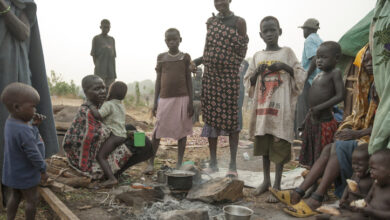
UN Receives Pledges Of $2.4 Billion To Support Drought-Affected People In Horn of Africa
The United Nations (UN) on Wednesday announced it has received pledges of $2.4 billion to fund aid operations for some…
Read More » -
Kenya
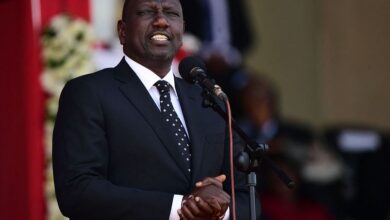
Kenyan President William Ruto Appeals Sudan’s Warring Military Generals To Stop Fighting
Kenyan President William Ruto on Wednesday urged the two warring Sudanese military generals to stop the fighting that has entered…
Read More » -
Kenya
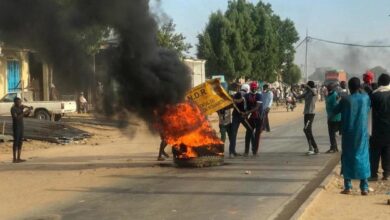
Kenyan Police Use Teargas To Disperse Protesters As Protests Resume
The Kenyan police on Tuesday used teargas to disperse protestors who resumed their anti-government protests against skyrocketing prices of essential…
Read More » -
Ethiopia
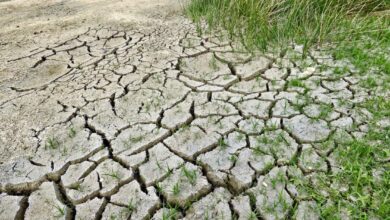
Drought In The Horn Of Africa Made Worse By Climate Change- WWA Study
The drought in the Horn of Africa has been made worse by human-induced climate change, according to a new report…
Read More » -
Kenya
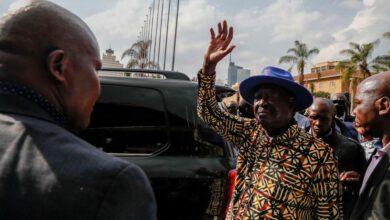
Kenya’s Main Opposition Party To Resume Anti-Government Protests As Talks Fail
Kenya’s main opposition party on Monday announced that it has decided to resume anti-government protests from May 2, nearly three…
Read More » -
Kenya
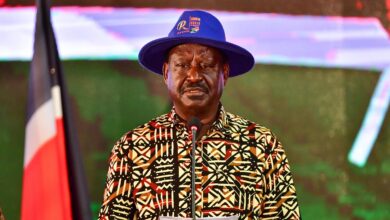
Kenya’s Opposition Party Plans To Hold Meeting, Rally Ahead Of Talks With Government
Kenya’s main opposition party on Tuesday announced plans to hold a public rally as it prepares for talks with the…
Read More » -
Kenya

Kenyan Opposition Leader Odinga Threatens More Protests Over Kenya Talks Row
Kenyan opposition leader Raila Odinga on Tuesday demanded that parties outside parliament should also be involved in talks on electoral…
Read More » -
Kenya
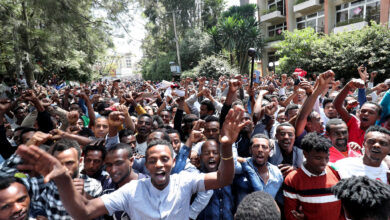
Kenyan Opposition Leader Raila Odinga Suspends Monday’s Protest
Kenyan opposition leader Raila Odinga on Sunday announced that he has suspended the protests planned on Monday to allow for…
Read More » -
Kenya

Kenyan President: Action Will Be Taken Against Protestors Involved In Criminal Activity
Kenyan President William Ruto on Tuesday said the government will take strict action against all criminals involved in the anti-government…
Read More » -
Kenya

Kenyan Police Chief Announces Fresh Ban On Protests Planned For Monday
The Kenyan police chief on Sunday announced a ban on demonstrations planned on Monday after last week’s protests grew into…
Read More » -
Kenya

Kenyan Opposition Leader Odinga Vows To Continue With Nationwide Protests
Kenyan opposition leader Raila Odinga on Tuesday vowed to continue with nationwide protests against President William Ruto’s government over increasing…
Read More » -
Kenya

Kenya’s Opposition Leader Odinga Calls For Protest Against Rising Cost Of Living
Kenya’s opposition leader Raila Odinga on Sunday appealed to his supporters to join in large numbers in countrywide protests on…
Read More » -
Ethiopia

Drought Trends In Horn Of Africa Worse Than 2011 Famine- IGAD Climate Center Claims
Drought trends in the Horn of Africa are now worse than the conditions experienced during the 2011 famine in which…
Read More » -
Kenya
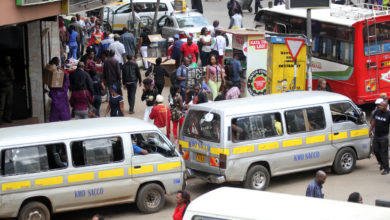
Kenyan Government Describes Terror Alerts By US, UK As Completely Unfortunate
The Kenyan government on Friday called terror alerts issued by the United States (US) and the United Kingdom (UK) completely…
Read More » -
Democratic Republic of the Congo
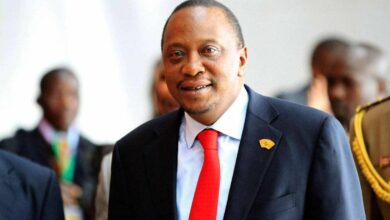
EAC: Kenya, Rwanda Request M23 Ceasefire, Withdrawal From East Congo
The East African Community (EAC) bloc on Friday said Rwandan President Paul Kagame and former Kenyan president Uhuru Kenyatta have…
Read More » -
Kenya
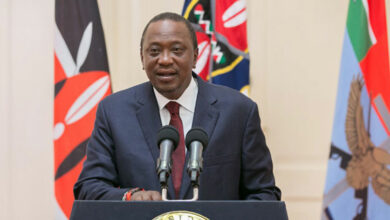
Kenyan Government To Spend $37 Million On Sending Troops To DR Congo
The Kenyan Parliament on Wednesday approved the deployment of the deployment of nearly 1,000 troops for a new regional force…
Read More » -
Kenya
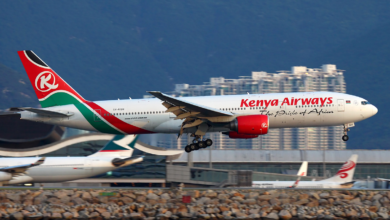
Kenyan Labor Court Orders Striking Kenyan Airways Pilots To Resume Work
A Kenyan labor court on Tuesday ordered hundreds of striking pilots at Kenya Airways to resume work on Wednesday while…
Read More » -
Kenya

Kenyan Government Delivers Emergency Relief Supplies To Neighboring Somalia
The Kenyan government Thursday delivered emergency relief supplies to neighboring Somalia, just a week after twin bombing attacks jolted the…
Read More » -
Democratic Republic of the Congo
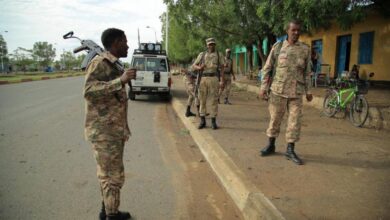
Kenyan Government Deploys Troops To Eastern DR Congo To End Bloodshed
The Kenyan government on Wednesday deployed its forces to the eastern Democratic Republic of Congo (DRC) as part of a…
Read More » -
Kenya

Kenyan President Ruto New Cabinet Members Get Sworn-In Two Months After Vote
Kenyan President William Ruto’s cabinet members were sworn in on Thursday, almost two months after he won the presidential election,…
Read More » -
Business

Kenya’s Safaricom Launches Mobile Network In Ethiopia As First Private Operator
Kenya’s biggest telco, Safaricom, on Thursday, launched its mobile network in Ethiopia, becoming the first private operator in the east…
Read More » -
Kenya

Kenya’s Interior Secretary: At Least 20 Heads Of State To Attend Ruto’s Inauguration
Kenya’s Interior Principal Secretary Karanja Kibicho has said that at least 20 Heads of State are expected to attend Tuesday’s…
Read More » -
Kenya

Kenya’s Supreme Court Upholds William Ruto’s Presidential Election Victory
Kenya’s Supreme Court on Monday rejected challenges to the results of the presidential election and upheld Deputy President William Ruto’s…
Read More » -
Kenya

Kenya’s Opposition Leader Odinga Says He Will Respect Supreme Court’s Decision
Kenya’s main opposition leader Raila Odinga on Monday said he believes that he has won the recently held election, but…
Read More » -
Ethiopia
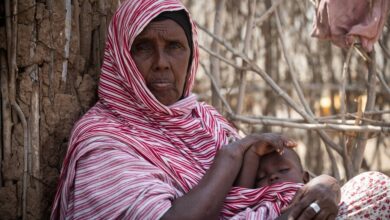
WMO Warns Of Worsening Drought In Horn Of Africa Due To 5th Failed Rainy Season
The World Meteorological Organization (WMO) on Friday warned of worsening drought in the Horn of Africa region in the face…
Read More »

